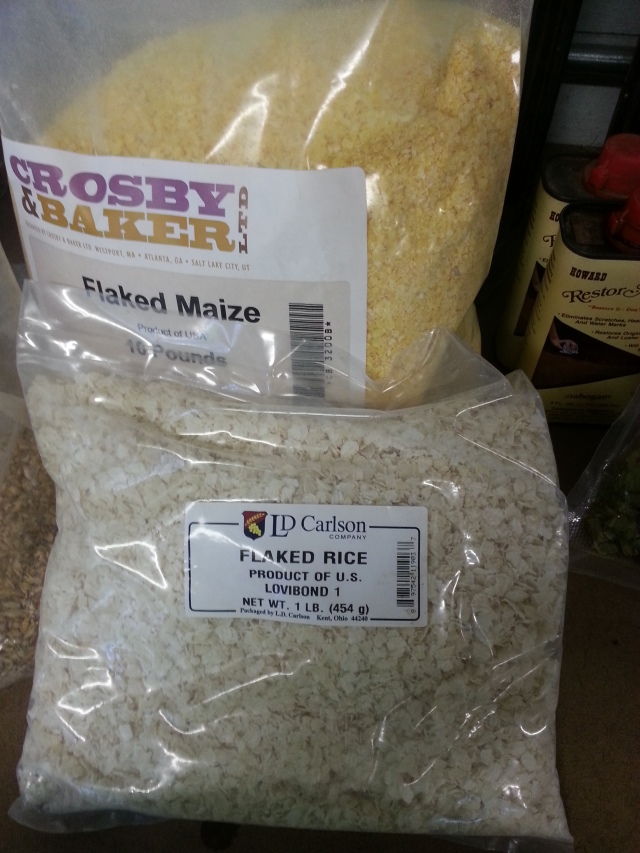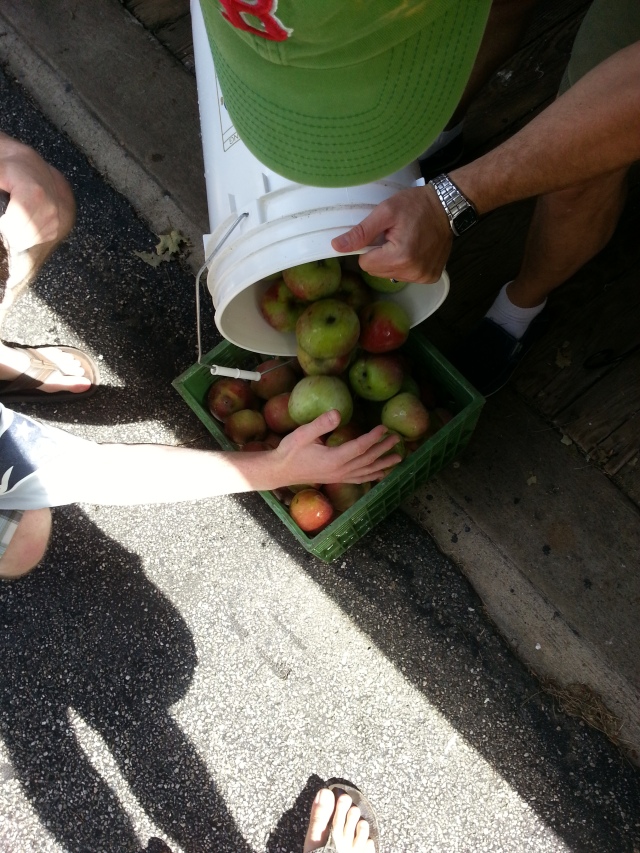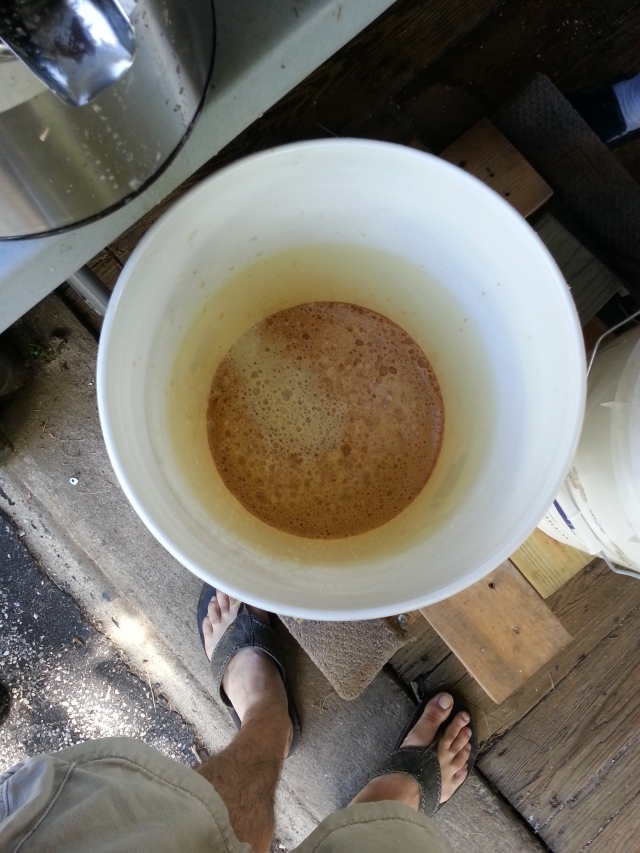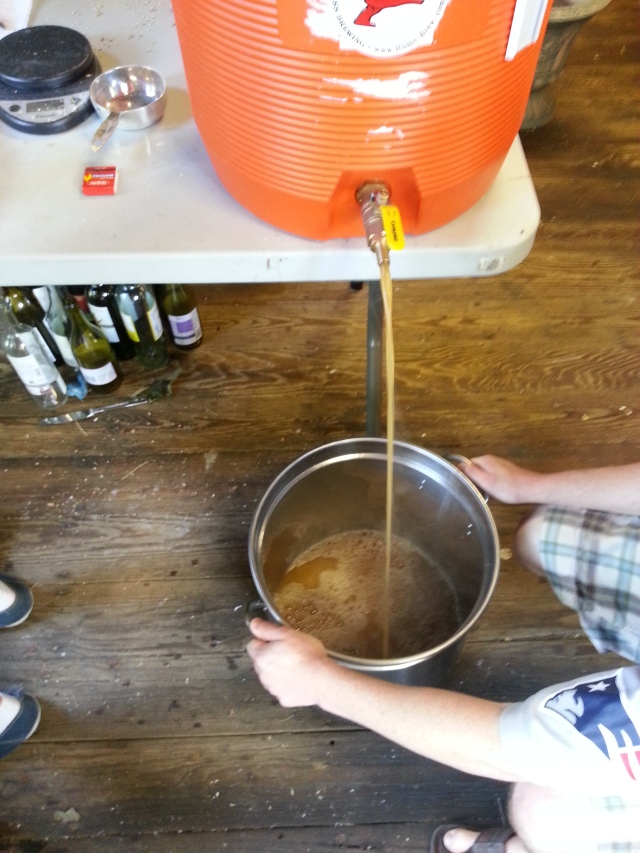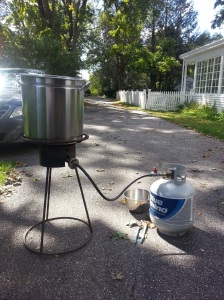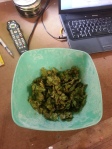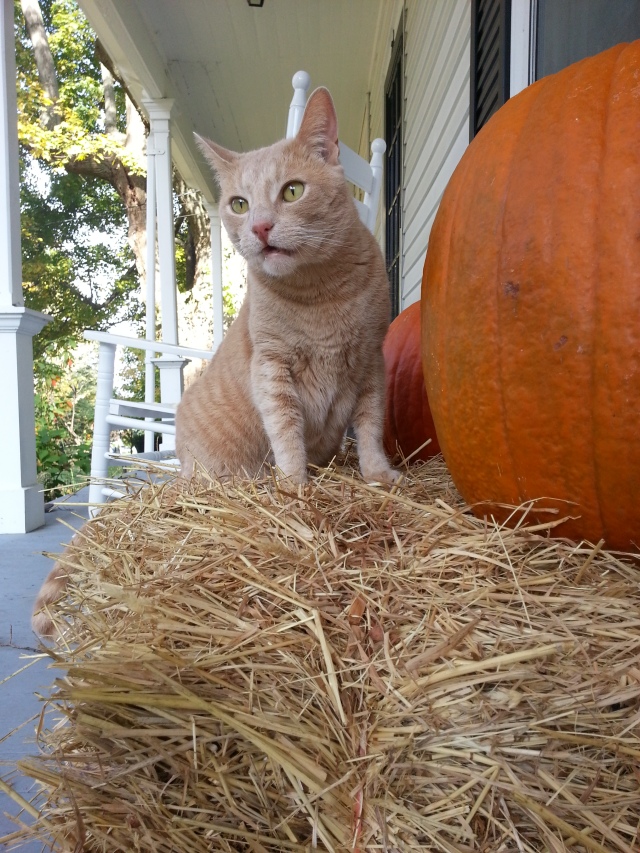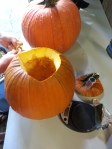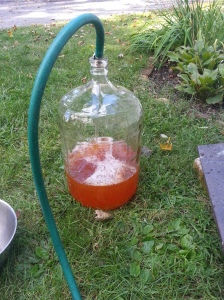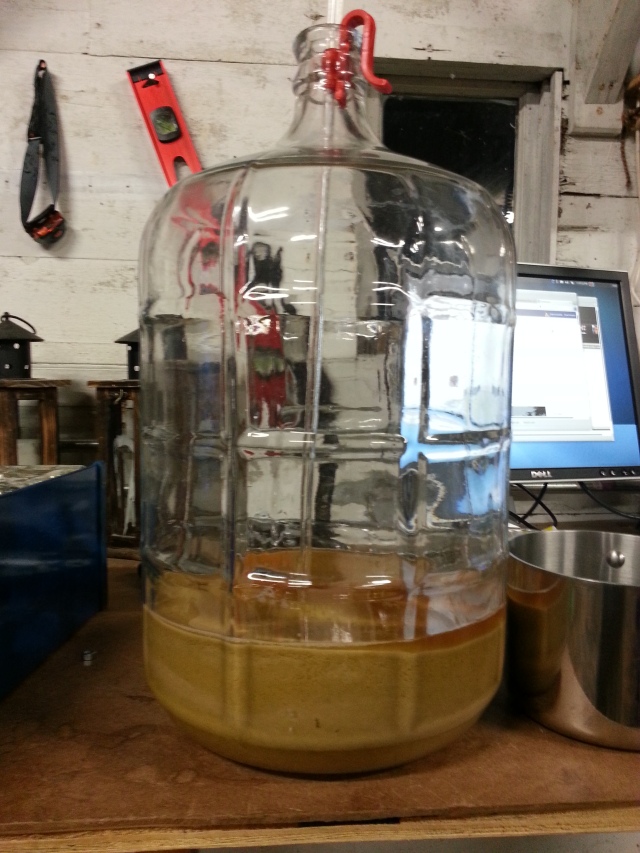I have been too busy to even remember that I promised to actually blog the process of making my pumpkin lager, but at last I have put fingers to keys.
After seeing a a couple of different methods for brewing in pumpkins I thought I would try my hand. Some methods were over-the-top while others were simply for show. I thought I would try and do something moderately over-the-top that would actually translate to better beer and not just for wow-factor. It seemed it would either be a painful process that would yield little to know difference in actual taste and just look cool, or it would help to enhance the over-all flavor of the beer. No matter how it would turn out I figured it would at least give me the chance to slaughter and gut some pumpkins with football on in the background while drinking beer in my barn with friends. We had the added bonus of making a few gallons of hard cider, freshly picked from my daycare provider’s mini orchard. These were not the best apples for cider (I am not even sure what two varieties they were), but booze is booze.
This post will break down the core recipe I used and its subsequent deviations as well as journal the process with plenty of photos to distract you from my boring prose.
First, the recipe. Since I have a new freezer in the cellar that I rigged with a thermostat override I wanted to try a lager–a real lager with accurate temperature control. Lagers needs to hover around 45-50 degrees F. Unlike past lagers I have done using a a California lager yeast that is adaptable to temperature fluctuations I went with a Bohemian lager yeast strain that is not so friendly to temperature fluctuations or consistently higher than optimal temperatures. Since lagers impart a crisp, clean taste to beer I went with what I thought would help balance this, listed below.
Ingredients:
- 13 lbs. 2-row, pale malt
- 2 lbs. Pilsner malt
- 1 lbs. Crystal malt
- 0.4 lbs. crushed rice hulls
- 0.5 lbs. crushed Maize
- 1 oz. Mt. Hood hops
- 2 oz. Fuggle hops
- 3 large pumpkins for lagering (from the garden)
- 3 sugar pumpkins for use in the boil (from the garden)
- 3/4 cups of priming sugar
- 21 tbsp mix of nutmeg, cinnamon, allspice, and ginger
Cider ingredients:
- 1 crushed Camden tablet
- 1 crushed Pectin tablet
- Champagne yeast
I wont get into the nitty-gritty of the brewing process and focus more on what was unique about the process. Before even starting the brewing process we baked the sugar pumpkins on 350 F for one hour to get them nice and mushy. Once baked you simply just remove the skin from the guts and tie the guts into a muslin bag for later use.
Once all the equipment was set-up we began boiling the water to be used in our handy mash tun to mash all of the grains for an hour at ~165 F. Rice hulls are simply used to keep the grans from clumping too much during the mash.
With this one hour downtime we set our eyes on the apples and began slicing them up to use in my neighbors crazy efficient juicer. Cider is easy, you press (juice in our case) the apples and throw in one crushed Camden tablet to kill any wild yeast that imparts undesirable off-tastes that found their way in via the apple peels. After 24 hours you add some Pectin to help clarify the cider during fermentation and pitch in Champagne yeast. Lots of different yeast can be used in cider, but Champagne is the most common for its clean, dry taste. This is a no frills cider, unlike my rocket fuel holiday cider that is coming up in November.
Back to the pumpkin lager brewing. Once the mash is complete we mash-out and sparge the delicious smelling wort (unfermented beer), as above.
The wort is what we then move on to boil with the other ingredients: hops and pumpkin guts. This was a 60 minute boil. The pumpkin was boiled all 60 minutes and 3 oz. of hops were added 1 oz. at a time at 20, 30, and 55 minutes. The pumpkin is boiled in the muslin bag so too much sediment isn’t included. We chose full leaf Fuggle hops and Mt. Hood pellet hops as the best compliments to this beer. Fuggle has a woody, earthy aroma with strong spice characteristics. We used this at the end of the boil for aroma more than taste. Mt. Hood is best described with mild flower/spice aroma characteristics and a hint of forest. “Clean” commonly describes it, another reason we chose it for this lager. This hops selection couples well with the maize being used. Maize lightens the body of beer and reduces hazing, which we figure would be a big issue in the brewing method. Corn also adds a natural flavor to beer and is well suited to lagers. Maize was also used almost as exclusively as pumpkins in Colonial times and is something that I thought would be a nice touch to this old style, Colonial-origin beer.
While this was happening we watched football, drank a lot of beer, gutted pumpkins and roasted pumpkin seeds for a snack. Jeeves had to inspect the pumpkins first and I am pretty sure they didn’t pass his inspection with the stink face he’s giving.
We inserted an airlock into the top of the pumpkins so CO2 during fermentation can escape. Last thing I want to do is clean up exploded pumpkins with gallons of beer in them. This proved unnecessary since the seal on the pumpkin was not perfect and allowed for a natural release of CO2 while also being relatively sanitary enough.
Finally, once everything is boiled we cool the wort. My wort chiller is broken, so this step was skipped, although it was skipped unintentionally. Likely due to the fact that one too many beers were consumed the wort was poured straight into the glass carboy and then topped-off to six gallons with cold water. This was incredibly dumb as the rapid shifts in temperature exploded my carboy and I lost all of the work to grass fertilizer. No clue what I was thinking and knew better.
Starting over on Sunday I did round two, solo, and with far less beer consumption but just as much football.
Once everything was cooled and the lager yeast pitched in the carboy I transferred the wort to their respective pumpkins and threw them in my “lagering cellar”. ~Two weeks later they were transferred to a secondary fermentation and the spices were added. I use very little in the way of spices since I hate pumpkin beers that taste like I am drinking a pumpkin pie. One week after that everything was kegged with priming sugar added and left to carbonate for one week.

- compost.



